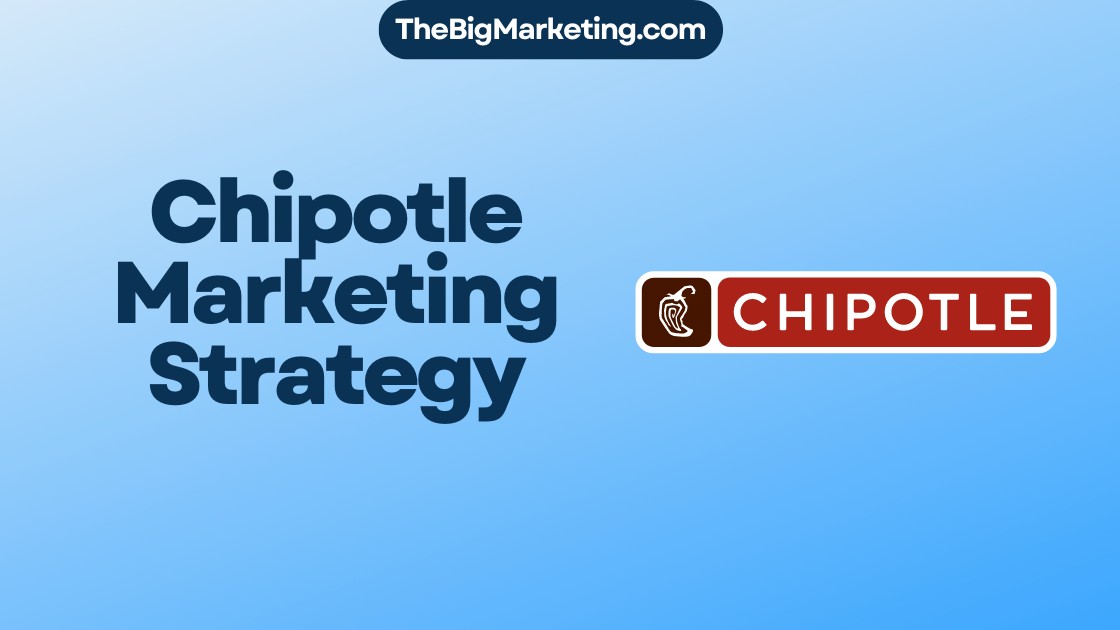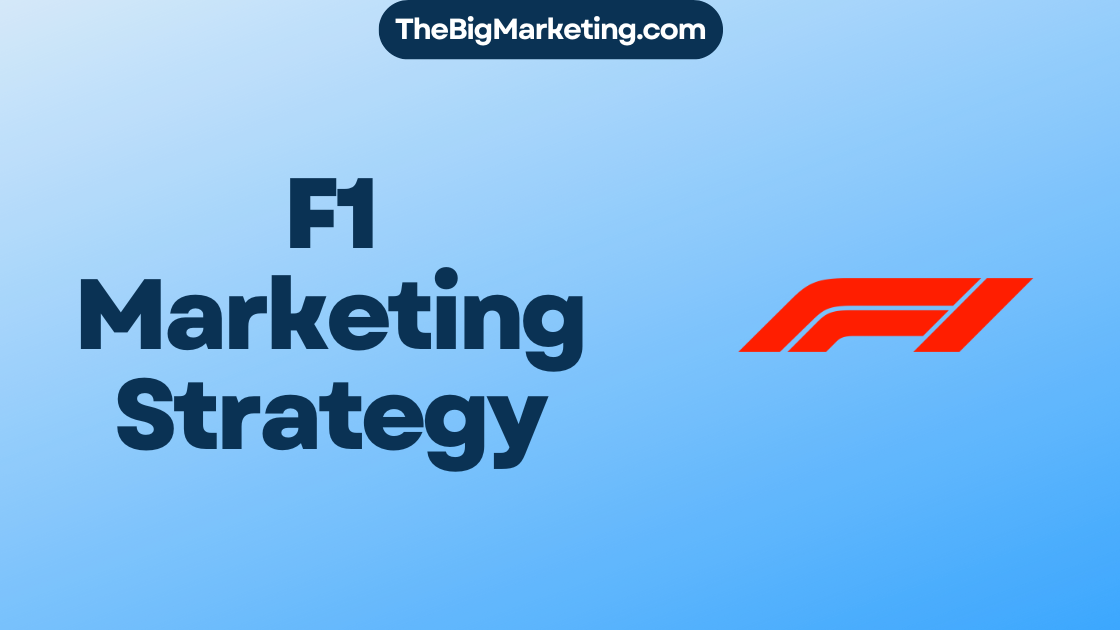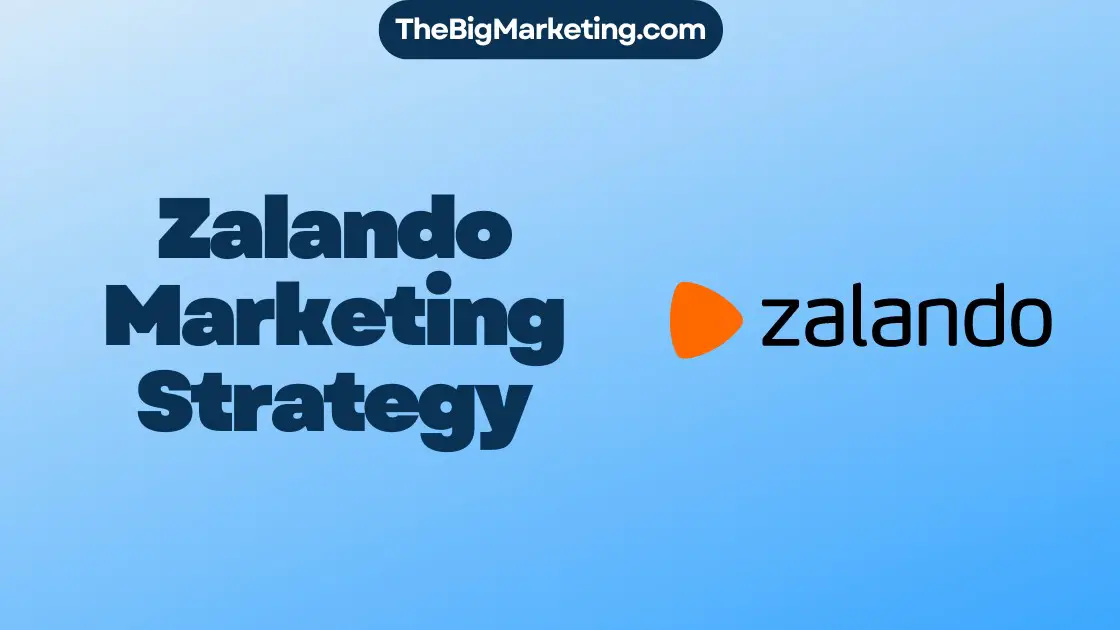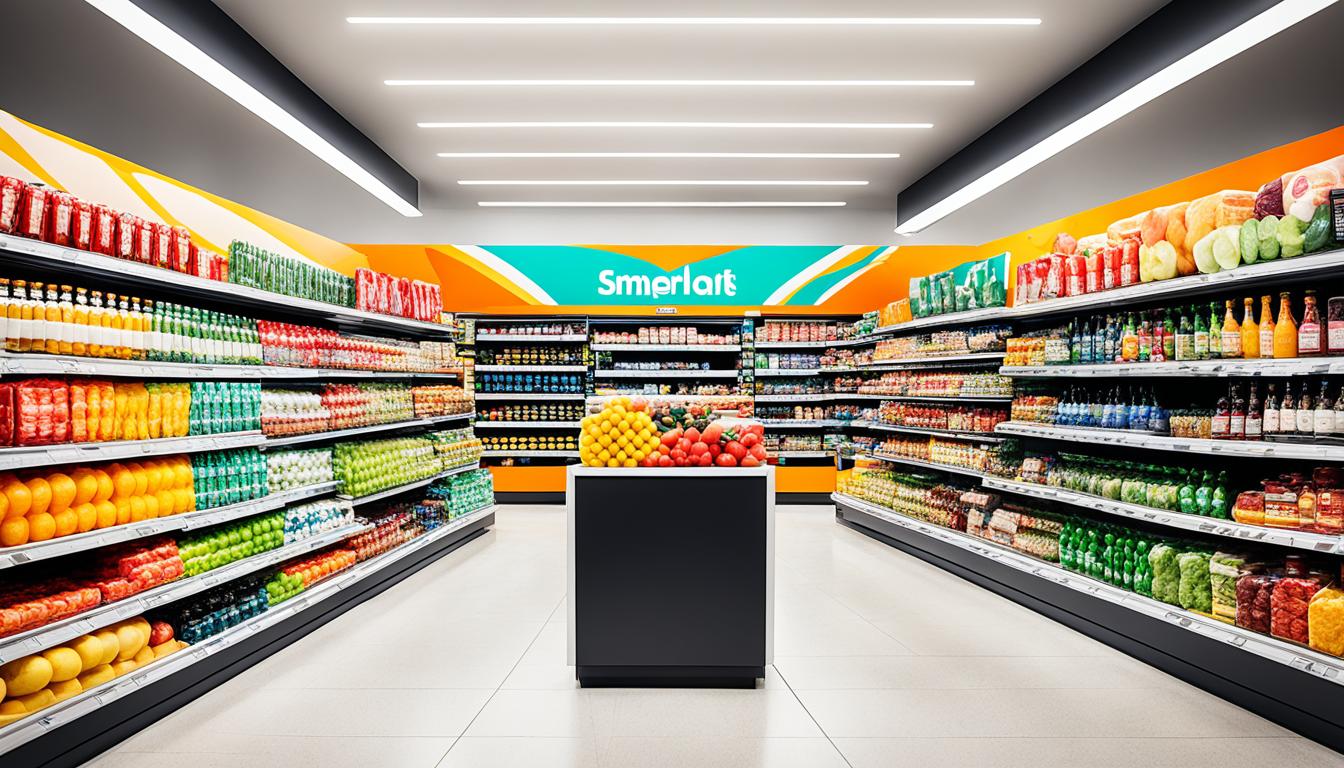A full-funnel marketing strategy is a comprehensive approach that considers the entire customer journey, from initial awareness to conversion and beyond. To maximize the potential of their marketing funnel, companies must optimize each stage and ensure a seamless connection between them. This guide will provide an in-depth overview of the full funnel marketing strategy in 2024, covering the top of the funnel, middle of the funnel, bottom of the funnel, and post-funnel stage.
Key Takeaways:
- A full-funnel marketing strategy encompasses the entire customer journey.
- Optimizing the funnel at each stage is crucial for maximizing its potential.
- The top of the funnel focuses on creating awareness and recognition.
- The middle of the funnel aims to educate and engage potential customers.
- The bottom of the funnel focuses on converting leads into paying customers.
Understanding the Marketing Funnel
The marketing funnel is a key concept in developing an effective full-funnel marketing strategy. It helps businesses understand and organize the customer journey into distinct stages. By comprehending these stages, companies can tailor their marketing efforts to meet the needs of potential customers at each phase, from awareness to conversion and retention.
The first stage of the marketing funnel is awareness. This is where potential customers are introduced to a brand or product. At this stage, companies focus on creating brand awareness, generating interest, and capturing the attention of their target audience. Popular awareness-building tactics include content marketing, social media advertising, and search engine optimization (SEO).
The next phase of the marketing funnel is the consideration stage. Here, prospects are actively researching and evaluating different solutions to their problem. To effectively engage with potential customers in this stage, businesses must provide valuable information and resources that address their needs. Strategies such as email marketing, webinars, and testimonials are commonly used to nurture leads and build trust.
Once prospects have moved through the consideration stage, they enter the conversion stage. At this point, they are ready to make a purchase decision. The goal in this phase is to convert leads into paying customers. Tactics such as retargeting, email campaigns, and live demos are effective for encouraging prospects to take action and complete a purchase.
Finally, the post-funnel stage focuses on retention and advocacy. After a customer has made a purchase, it’s essential to nurture the relationship and encourage repeat business. Strategies for fostering customer loyalty include personalized offers, excellent customer service, and loyalty programs.
Having a clear understanding of the marketing funnel and the customer journey is crucial for implementing a successful full-funnel marketing strategy. By effectively targeting and engaging potential customers at each stage, businesses can drive awareness, consideration, conversion, and retention, ultimately fueling growth and success.
Top of Funnel (Awareness)
At the top of the funnel, the goal is to create awareness and recognition of your brand and products. This stage is vital for attracting potential customers and introducing them to what you have to offer. In order to successfully build awareness, it is essential to utilize various marketing tactics.
Search Engine Optimization (SEO)
SEO plays a crucial role in driving organic traffic to your website and improving your online visibility. By optimizing your website with relevant keywords, creating high-quality content, and improving your website’s user experience, you can increase your chances of ranking higher in search engine results pages (SERPs).
Social Media Marketing
Social media platforms provide a great opportunity to reach a wide audience and engage with potential customers. By creating compelling content, sharing updates about your brand, and interacting with your audience, you can effectively build brand awareness and recognition.
Content Marketing
Content marketing involves creating valuable and relevant content that educates, entertains, or inspires your target audience. By publishing blog posts, videos, infographics, and other types of content, you can establish yourself as an authority in your industry and attract potential customers to your brand.
Influencer Marketing
Influencer marketing involves partnering with individuals who have a large following and influence over your target audience. By collaborating with influencers and having them promote your brand or products on their social media channels, you can reach a wider audience and generate brand awareness.
Native Advertising
Native advertising involves creating ads that blend seamlessly with the content on the platform they appear on. By creating native ads that provide value to the audience and align with the platform’s tone and style, you can capture the attention of potential customers and drive awareness of your brand.
In order to measure the effectiveness of your top-of-funnel campaigns, it is important to track key metrics such as impressions, traffic, and click-through rates (CTR). These metrics will help you evaluate the success of your efforts and identify areas for improvement.
| Tactics | Key Metrics |
|---|---|
| Search Engine Optimization (SEO) | Organic traffic, keyword rankings, SERP visibility |
| Social Media Marketing | Reach, engagement, follower growth |
| Content Marketing | Website traffic, time on page, social shares |
| Influencer Marketing | Reach, engagement, influencer collaboration success |
| Native Advertising | Impressions, click-through rates, conversions |
By implementing a strategic mix of these top-of-funnel tactics and regularly analyzing the metrics, you can effectively build brand awareness and recognition. Remember to adapt and refine your strategies based on the insights gained from your campaigns to optimize your results.
Middle of Funnel (Consideration)
In the middle of the funnel, prospects are actively evaluating their options and considering different solutions. This is a crucial stage where businesses can nurture leads and guide them towards making a purchase decision. To effectively engage potential customers during the consideration phase, it is essential to provide valuable content and interactions that educate and build trust.
Lead Nurturing
Lead nurturing is a key strategy in the middle of the funnel. It involves providing relevant and personalized content to leads based on their interests and needs. By nurturing leads with targeted information, businesses can establish themselves as trusted authorities and move prospects closer to conversion. Tactics such as email campaigns, drip marketing, and personalized messaging can help nurture leads effectively during this stage.
Content Marketing
Content marketing plays a crucial role in the middle of the funnel. By creating valuable and informative content, businesses can educate prospects about their products or services and showcase their expertise. This can be achieved through blog posts, whitepapers, ebooks, and case studies. Effective content marketing during the consideration stage positions the business as a solution provider and helps prospects make informed decisions.
Webinars
Webinars are powerful tools for engaging leads and providing in-depth information during the consideration stage. Hosting webinars allows businesses to showcase their thought leadership and expertise, while also interacting with potential customers in real-time. Webinars offer an interactive platform to address specific pain points and showcase the benefits of the business’s offerings.
Testimonials
Testimonials from satisfied customers are invaluable in the middle of the funnel. They provide social proof and help build trust with potential customers. Businesses can showcase testimonials on their website, in marketing materials, or through video testimonials. Testimonials add credibility to the business’s offerings and help prospects feel more confident about their decision.
Calls to Action (CTAs)
Strategic and well-placed calls to action (CTAs) are essential in the middle of the funnel. CTAs prompt leads to take the next step in their buyer’s journey and guide them towards conversion. Whether it’s a request for more information, a demo, or a free trial, CTAs should be clear, compelling, and relevant to the content being presented. Effective CTAs help drive engagement and increase the chances of converting leads into customers.
To measure the effectiveness of middle-of-funnel campaigns, businesses should analyze key metrics such as lead quality, engagement rates, and conversion rates. By continually optimizing and refining their strategies, businesses can ensure they are effectively nurturing leads and guiding them towards conversion in the middle of the funnel.
Bottom of Funnel (Conversion)
In the bottom of the funnel stage, prospects have progressed through the customer journey and are now ready to make a purchase decision. This is the critical moment when leads can be converted into paying customers. To maximize conversion rates, it’s important to implement targeted strategies and tactics.
Retargeting
Retargeting is a powerful technique that allows you to re-engage with prospects who have shown interest in your brand or product but have not yet made a purchase. By displaying personalized ads to these prospects as they browse other websites or social media platforms, you can remind them of their initial interest and motivate them to take action. Retargeting helps keep your brand top of mind and increases the likelihood of conversion.
Email Marketing
Email marketing plays a crucial role in bottom-of-funnel conversion. By sending targeted and personalized emails to leads who have expressed interest or shown purchase intent, you can nurture their decision-making process. Email campaigns can include product recommendations, special offers, and customer testimonials to showcase the value and benefits of your offerings. Well-crafted emails with compelling CTAs (calls to action) can drive leads to the final stage of conversion.
Live Demos
Live demos provide prospects with an immersive experience that demonstrates the functionality and value of your product. They allow potential customers to see firsthand how your product can address their pain points and fulfill their specific needs. During live demos, you can address any concerns or questions directly, building trust and confidence in your brand. Including compelling CTAs throughout the live demo can effectively guide prospects towards making a purchase.
CTAs
CTAs (calls to action) are an essential component in driving conversion at the bottom of the funnel. Strong, clear, and relevant CTAs guide prospects towards taking the desired action, whether it’s making a purchase, requesting a quote, or signing up for a trial. The language and design of CTAs should be optimized to create a sense of urgency and motivate prospects to complete the conversion process.
By strategically implementing various tactics, such as retargeting, email marketing, live demos, and compelling CTAs, you can effectively guide prospects through the bottom of the funnel and convert them into loyal paying customers.
| Metric | Description |
|---|---|
| Conversion Rate | The percentage of leads who take the desired action and become paying customers. This metric measures the effectiveness of your bottom-of-funnel campaigns in driving conversions. |
| Cost-per-Lead | The average cost incurred to acquire a lead. By tracking the cost-per-lead, you can evaluate the efficiency and cost-effectiveness of your conversion strategies. |
| Customer Acquisition Cost | The total cost associated with acquiring a new customer, including marketing and sales expenses. Monitoring customer acquisition cost helps you assess the profitability of your conversion efforts. |
Post-Funnel Stage (Retention/Advocacy)
The post-funnel stage plays a vital role in maximizing customer satisfaction and establishing long-term relationships. It focuses on retaining customers and turning them into loyal brand advocates. By employing effective tactics during this stage, businesses can ensure customer retention and drive advocacy, which ultimately leads to sustained growth. Two key tactics used in the post-funnel stage are upselling and cross-selling.
Upselling
Upselling refers to the strategy of encouraging customers to upgrade to a higher-priced product or service that better meets their needs. By identifying the specific needs and preferences of customers, businesses can present tailored upselling offers that provide added value. This not only increases the customer’s satisfaction but also boosts revenue for the business. Upselling can be achieved through personalized recommendations, exclusive offers, or bundled packages that showcase the benefits of the higher-priced option.
Cross-selling
Cross-selling revolves around offering complementary products or services to customers who have already made a purchase. By analyzing customer behavior and preferences, businesses can identify relevant cross-selling opportunities. For example, an online retailer selling cameras can recommend camera accessories such as lenses, tripods, or camera bags to customers who have already bought a camera. Cross-selling enhances the customer experience and drives additional revenue for the business. It helps to increase the average order value and fosters long-term customer loyalty.
At this stage, exceptional customer service plays a pivotal role in ensuring customer satisfaction and loyalty. By delivering outstanding support and personalized experiences, businesses can create a positive impression and reinforce customer advocacy. This can be achieved through responsive customer support channels, proactive communication, and tailored solutions that address individual customer needs.
Measuring the effectiveness of post-funnel strategies is crucial for optimizing retention and advocacy efforts. Key metrics to consider include the customer retention rate, which measures the percentage of customers who continue to do business with the company over time; the customer lifetime value, which quantifies the total revenue generated by a customer during their entire relationship with the business; and the referral rate, which indicates the number of customers who refer the business to their network.
Analyzing the Market and Competition
When developing a comprehensive marketing strategy, conducting a thorough market analysis is crucial. By understanding the market landscape and the competitive landscape, businesses can identify growth opportunities and strategic advantages that will drive success. In this section, we will explore the key components of market analysis, the target addressable market (TAM), competitive analysis, and brand differentiation.
Market Analysis
Market analysis involves researching and evaluating the target market to gain insights into customer preferences, needs, and behaviors. It helps businesses understand the demand for their products or services and identify opportunities for growth. By conducting a market analysis, companies can:
- Identify target audience segments
- Evaluate market size and trends
- Analyze customer preferences and buying behavior
- Identify market gaps and unmet needs
Target Addressable Market (TAM)
Estimating the target addressable market (TAM) is a crucial part of market analysis. It involves determining the total achievable revenue for a product or service within a specific market segment. By understanding the TAM, businesses can:
- Evaluate the revenue potential for their product or service
- Identify market share and growth opportunities
- Assess the profitability of entering a specific market segment
Competitive Analysis
Conducting a competitive analysis helps businesses understand their competitors’ strengths, weaknesses, and market positioning. By analyzing the competition, companies can:
- Identify direct and indirect competitors
- Evaluate competitor product offerings and pricing
- Assess competitor marketing strategies and messaging
- Identify gaps in the market to differentiate their brand
Brand Differentiation
Brand differentiation is the process of positioning a brand in a way that sets it apart from its competitors. By emphasizing unique value propositions and key differentiators, businesses can attract and retain customers. Key elements of brand differentiation include:
- Unique selling propositions (USPs)
- Branding and visual identity
- Product or service features and benefits
- Customer experience and satisfaction
| Market Analysis | Target Addressable Market (TAM) | Competitive Analysis | Brand Differentiation |
|---|---|---|---|
| Researching and evaluating the target market | Determining the achievable revenue in a market segment | Understanding competitors’ strengths, weaknesses, and positioning | Positioning the brand to stand out from competitors |
| Evaluating market size, trends, and customer behavior | Evaluating market share and growth opportunities | Evaluating competitor product offerings and pricing | Emphasizing unique value propositions and differentiators |
| Identifying target audience segments and preferences | Assessing the profitability of entering a market segment | Assessing competitor marketing strategies and messaging | Highlighting product or service features and benefits |
Auditing Your Brand’s Story
Reviewing and auditing your brand’s story is an essential step in developing a compelling full-funnel marketing strategy. By ensuring that your messaging aligns with the target audience’s needs and preferences, you can create a strong connection and build brand loyalty. One framework that can guide this process is the StoryBrand framework, which helps clarify your brand’s message and tells a powerful story that resonates with customers.
The StoryBrand framework emphasizes the importance of addressing customer needs and positioning your brand as the solution to their problems. By understanding your customers’ pain points, desires, and aspirations, you can craft a brand story that captures their attention and generates an emotional response.
To conduct an effective brand story audit, consider the following steps:
- Identify your target audience: Clearly define who your ideal customers are and what their needs and goals are. This will help you tailor your brand story to resonate with them specifically.
- Tackle significant problems: Identify the key challenges or pain points your customers face and position your brand as the solution. Use storytelling techniques to create relatable narratives that show how your product or service addresses these challenges effectively.
- Create value propositions: Clearly communicate the unique value your brand provides and how it differentiates from competitors. This could be through product quality, superior customer service, or innovative features.
- Ensure consistency: Review all your marketing materials, including website content, social media posts, and advertising campaigns, to ensure they tell a consistent and cohesive brand story. Consistency builds trust and reinforces your brand’s message.
By conducting a thorough brand story audit and implementing the insights gained, you can fine-tune your marketing strategy to effectively engage your target audience throughout the full funnel. A cohesive and compelling brand story will help you build lasting relationships, drive customer loyalty, and ultimately achieve your business goals.
Example Brand Story Audit Checklist:
| Aspect | Description |
|---|---|
| Target Audience | Clearly define your target audience demographics, psychographics, and their specific needs and goals. |
| Pain Points | Identify the main challenges or pain points your target audience faces and how your brand can provide solutions. |
| Value Propositions | Define and articulate the unique value your brand offers, highlighting key differentiators from competitors. |
| Messaging Consistency | Review all marketing materials to ensure consistent messaging across channels, reinforcing the brand story. |
Through a strategic brand story audit, you can align your messaging with customer needs, leverage the power of storytelling, and create a brand that resonates deeply with your target audience. By clarifying your brand’s message and ensuring its consistency, you can position your business for success throughout the full-funnel marketing journey.
Adjusting Your Marketing Plan
Once you have analyzed the market, competition, and audited your brand’s story, it is time to make adjustments to your marketing plan. This crucial step ensures that your strategy remains aligned with your objectives, and that your tactics are effective in reaching your target audience. By incorporating the insights gained from the previous steps, you can optimize your marketing plan for success and drive the desired results.
Setting New Objectives
As you analyze the market and competition, you may discover new opportunities or challenges that require a shift in your objectives. Consider the current market conditions, customer needs, and your brand’s unique value propositions. Set clear, measurable objectives that align with your overall business goals. These objectives will guide your marketing efforts and provide a sense of direction for your team.
Realignment of Tactics
With new objectives in place, it is essential to realign your tactics to support your marketing plan. Evaluate the effectiveness of your current tactics and identify any gaps or areas of improvement. Consider the different stages of the marketing funnel, such as top of funnel (awareness), middle of funnel (consideration), and bottom of funnel (conversion). Select the tactics that will best engage and convert your target audience at each stage of the customer journey.
For example, if your objective is to increase brand awareness, you may choose tactics such as social media marketing, content marketing, or native advertising. On the other hand, if your objective is to drive conversions, tactics like retargeting, email marketing, or live demos may be more suitable. It is crucial to prioritize tactics that not only align with your objectives but also resonate with your target audience.
Optimizing for Success
Adjusting your marketing plan based on market analysis, competition insights, and brand story audit allows you to optimize your strategies for success. By continuously evaluating and refining your plan, you can stay ahead of the competition, adapt to changing market conditions, and better meet the needs of your customers.
With the right adjustments to your marketing plan, you can effectively reach your target audience, achieve your objectives, and drive growth for your business. Regularly monitor the performance of your tactics, analyze the results, and make necessary adjustments to ensure you are on track to achieve your marketing goals.
Conclusion
In today’s digital landscape, a full-funnel marketing strategy is indispensable for optimizing the customer journey. By understanding the different stages of the marketing funnel and implementing effective tactics, businesses can drive growth, increase brand recognition, and improve customer retention.
From the top of the funnel, where brand awareness is paramount, to the middle of the funnel, where consideration and engagement take place, and finally to the bottom of the funnel, where conversions are made, each stage presents unique opportunities for optimization.
Furthermore, it is vital to focus on post-funnel activities to retain customers and turn them into brand advocates, ensuring long-term success. By adopting a holistic and integrated full-funnel marketing strategy, businesses can create a seamless customer experience that spans the entire journey.
In 2024 and beyond, companies that invest in full-funnel marketing strategies will be well-positioned to thrive. By optimizing the customer journey, businesses can drive growth, improve brand recognition, and foster customer loyalty. Embracing this approach truly sets the stage for continued success.



